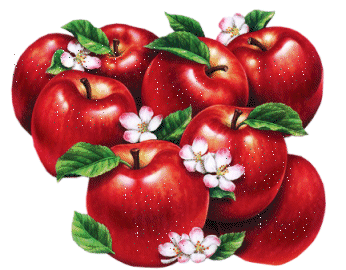.jpg)
For kids, fruits and veggies are the best source for numerous vitamins and other fortifying nutrients. What’s more, fruits and vegetables contain a wide variety of nutrients that have been shown to fight cancer. Increasing daily consumption of fruit and veg does more to prevent the disease than any other measure besides steering clear of cigarettes. It also lowers the risks of heart disease and diabetes. You may not think of these illnesses as threats to young people, but it’s important to get their eating habits off to a good start.
What can you do to make sure your child reaches the recommended goal? Health Living & Wellbeing have some tips for you to try out at home.
Begin the day with fruit and fruit juice: A 6-ounce glass of orange, grapefruit, cranberry, or tomato juice represents one serving. (If your child likes tomato juice, you may want to buy a low-sodium variety.) Read labels to make sure the product is 100 percent fruit juice, and steer clear of fruit drinks that are mostly sugar and water. While juice packs a nutritional punch with vitamins and minerals, it’s still a good idea to work in whole pieces of fruit, too. In addition to vitamins and minerals, it’s a great source of fibre. If your kid loves cereal, slice a banana, peach, or plum into the bowl. Or sprinkle raisins, dried apricots, strawberries, or blueberries over the top. In the wintertime, you can buy bags of frozen berries and defrost them in the microwave.
Pack a snack with a difference: Send your child off to school with a bag of crunchy carrots, a bunch of grapes, an apple, a banana, or a package of dried fruits. If he’s a somewhat adventurous eater, keep him interested with more exotic options: Offer mangoes, kiwis, and papayas (all sweet sources of vitamin C), or make mini-sandwiches by putting slices of avocado in between crackers (look for a brand without hydrogenated oils). When you’re pressed for time, single-serving containers of canned fruit packed in its own juices, or a single-serving container of fruit juice or tomato juice is a terrific portable snack.
Put it in plain view: When the munchies strike, most people reach for whatever’s handy. So keep a bowl of fruit on the kitchen counter. Store a bag of baby carrots, celery sticks, and sliced sweet peppers within your child’s reach in the refrigerator. Instead of chocolate or crisps, keep plenty of one-serving boxes of raisins in the cupboard.
Pair fruit and veg with something your child loves: It’s okay to compromise: If your child won’t eat a plain banana, he might go for one spread with peanut butter. If he turns his nose up at broccoli, try sprinkling a little grated cheese on top of steamed broccoli (but don’t cover it in a processed cheese sauce). Let him put ketchup on his baked potato (ketchup is more nutritious than you may think anyway). Mix chunks of fresh melon with two tablespoons of raspberry yogurt. You get the idea.
Stock up on canned and frozen produce: Frozen is nutritionally comparable to fresh produce and can be ready to eat in just a few minutes. Even canned fruits and veggies pack plenty of nutrients, so keep them on hand for the times you discover you’ve used up everything in the freezer. With cans of sliced peaches, pears, and pineapple (packed in water or unsweetened juice - not heavy syrup), you can quickly toss together an appealing fruit salad for an after-school snack. To make your family’s favourite dinner more tasty as well as more nutritious, add frozen or canned corn, canned diced tomatoes, or frozen peas. When you make lasagna, slip some frozen chopped spinach into one layer. Choose frozen vegetables that aren’t topped with butter or sauces; they’re a far more healthy option.
Include at least one vegetable at lunch: Put sliced tomatoes and lettuce on sandwiches; serve a cup of vegetable-noodle soup (you may want to call it simply “noodle soup” around your child); or offer carrot and celery sticks instead of crisps
Make it easy on yourself: Microwaving is a great way to prepare vegetables. Because it’s so fast, the nutrient loss is much less than occurs with boiling or even steaming on the stove. Just make sure you use only microwave-safe containers. For even cooking, cut veggies into bite-size pieces, and set the bowl’s lid slightly ajar so that steam can escape. Remove vegetables when they’re barely tender and let them stand three to five minutes. There are also some great brands on the market offering frozen alternatives.
Get back to the roots: Show your child where fruits and vegetables come from by having him help you plant and tend a small garden. Radishes are particularly easy to grow, and kids love digging them up. If you don’t have a back yard or garden big enough you could cultivate herbs in window boxes. For a fun and educational day out, take your child to the local garden centre and pick out plants and things you can grow that will fit in with your circumstances and lifestyle.
Add fruit to dessert: During the summer, serve a scoop of ice cream, frozen yogurt, or sorbet with fresh berries on top. Or just slice up a chilled watermelon! For a great winter dessert, slice apples into a baking dish and sprinkle them with cinnamon, raisins, a little sugar, and a dab of butter. Preheat the oven to 250 degrees, and bake 15 to 20 minutes.
Once these little changes become habit, you’ll find they don’t take any more effort than buying crisps and chocolate does now. Incorporating more fruits and vegetables into your child’s diet will go a long way toward keeping him healthy. Just as important, it will encourage him to make healthy food choices for himself as he grows up.
Souce :www.hlaw.ie









No comments:
Post a Comment